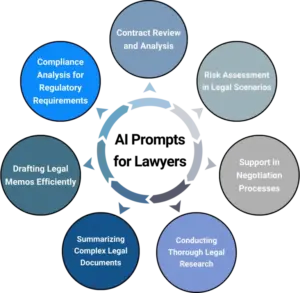In the intricate world of law, where precision is paramount and every word holds weight, the concept of standardized contract templates emerges as a beacon of efficiency. Imagine having the ability to simplify complex legal documents without sacrificing accuracy. This article delves into the manifold benefits that standardized contract templates bring to the forefront, revolutionizing the way legal professionals operate. From saving time to maintaining consistency, let’s explore the remarkable advantages of incorporating contract templates into your legal arsenal.
1. Time-Saving Marvels
In the legal realm, time is of the essence. Legal professionals are often swamped with a plethora of tasks, from conducting research to representing clients in court. Amidst this hustle, the idea of meticulously crafting legal documents can seem daunting. Here’s where standardized contract templates come to the rescue.
These templates act as a time-saving marvel, allowing legal professionals to focus on the intricacies of cases rather than drafting routine documents from scratch. Imagine the hours saved when the foundational structure of contracts is readily available. With templates at hand, lawyers can allocate their valuable time to analyzing case strategies, conducting research, and delivering comprehensive legal counsel.
By simplifying the process of drafting routine contracts, standardized templates liberate legal professionals from the time-consuming task of repeatedly assembling the same legal language. This newfound time can then be invested in refining legal arguments, exploring innovative approaches, and offering personalized solutions to clients.
2. Consistency and Accuracy
Legal documents are intricate mosaics of clauses, terms, and conditions. Ensuring consistency across these documents is a challenge that can’t be underestimated. Without standardized templates, the risk of omitting crucial terms or inadvertently changing the language is high. This not only wastes time but also jeopardizes the accuracy and credibility of the document.
Contract templates provide a unified structure that maintains consistency by incorporating essential clauses in similar contracts. Whether it’s employment agreements, nondisclosure agreements, or partnership contracts, standardized templates ensure that the critical components remain intact across various documents. This level of consistency not only saves time but also enhances accuracy by reducing the chances of omitting key terms or clauses.
By relying on templates, legal professionals can rest assured that the foundation of their contracts adheres to best practices and proven legal language. This consistency contributes to the overall professionalism of legal work, instilling confidence in clients and stakeholders.
3. Streamlined Workflows
The journey through the legal landscape can often feel like navigating a labyrinthine maze. Complex documents, intricate clauses, and varying legal requirements can create confusion and hinder efficient progress. This is where standardized contract templates come into play, transforming the experience into a streamlined journey.
Imagine having a clear roadmap for drafting various legal documents. Templates provide just that. By offering predefined sections and clauses, templates guide legal professionals through the document creation process. This results in a coherent and organized final product that follows a logical structure. As a result, legal professionals can save time that would otherwise be spent on structuring the document and can instead focus on ensuring the document aligns with the specific needs of the case.
Streamlined workflows also extend to collaboration. When multiple parties collaborate on a single case or contract, having a consistent structure ensures that everyone is on the same page. This minimizes misunderstandings and accelerates the collaboration process, leading to quicker resolutions and smoother negotiations.
4. Reduced Risk of Errors
Legal work leaves no room for errors. A seemingly minor mistake in a contract can lead to significant consequences, including financial loss, damaged relationships, and even legal disputes. Standardized contract templates serve as a shield against these potential pitfalls.
These templates are meticulously designed, often by legal experts, to incorporate carefully vetted language. This predefined language reduces the risk of errors by ensuring that crucial terms, conditions, and clauses are included. Legal professionals can trust that the language has been reviewed for accuracy and compliance with legal standards.
The risk of errors is further mitigated by the fact that templates are regularly updated to reflect changes in laws and regulations. This ensures that legal professionals are always working with the most current and accurate information, reducing the likelihood of errors that could lead to costly repercussions down the road.
5. Customization Without Complexity
One concern often raised about standardized contract templates is the fear that they might stifle creativity or fail to address unique scenarios. However, these concerns are unfounded. Contract templates offer a strong foundation that can be customized to suit specific cases while maintaining the legal framework.
Think of contract templates as a canvas. While the canvas provides a structure, it’s up to the artist to bring the painting to life with its unique strokes and colors. Similarly, legal professionals can easily tailor the clauses and terms within the template to align with the nuances of the case at hand.
The customization process is not only straightforward but also empowers legal professionals to deliver tailored solutions to their clients. By starting with a template, the bulk of the document is already in place, allowing lawyers to focus their attention on the specific terms that need modification. This approach strikes a harmonious balance between efficiency and personalization.
6. Enhanced Collaboration
Legal work rarely involves solitary efforts. Whether it’s negotiation, drafting, or review, collaboration is integral to the process. Standardized contract templates facilitate enhanced collaboration by providing a common ground for all parties involved.
Imagine a scenario where multiple parties need to negotiate and agree upon terms. With templates, everyone can work from the same foundational structure, minimizing confusion and misunderstandings. This leads to more efficient negotiations and smoother communication, as parties can refer to a consistent structure and language.
Enhanced collaboration also extends to internal teams within law firms. Associates, paralegals, and partners can work seamlessly on different aspects of a case, knowing that the documents they’re using adhere to a standardized format. This not only increases efficiency but also reduces the chances of miscommunication or errors due to inconsistent document structure.
7. Empowering Legal Professionals
Standardized contract templates have a profound impact on the way legal professionals allocate their time and expertise. By relieving legal professionals of the burden of routine drafting, these templates empower them to channel their expertise towards strategic thinking, legal analysis, and creative problem-solving.
With more time and mental bandwidth available, legal professionals can delve deeper into the nuances of their cases. They can explore alternative solutions, anticipate potential challenges, and craft persuasive legal arguments. This shift in focus from mundane tasks to high-level legal thinking enhances the overall quality of legal representation and strengthens the lawyer-client relationship.
Furthermore, this empowerment extends beyond individual cases. As legal professionals become more efficient, they can take on a greater volume of cases, contributing to the growth and success of their law practices.
8. Adaptability in a Dynamic Landscape
The legal landscape is in a constant state of evolution, with laws, regulations, and industry practices continuously changing. This fluidity can pose challenges for legal professionals striving to stay up-to-date. However, standardized contract templates provide a solution by offering adaptability in this dynamic landscape.
Templates can be updated and modified to reflect the latest legal requirements and industry standards. This ensures that the documents generated are always in compliance with the most recent laws and regulations. Legal professionals can rest assured that the templates they’re using are not only efficient but also up-to-date.
The ability to adapt templates to changing circumstances is a testament to their flexibility and enduring relevance. This adaptability not only saves time but also safeguards legal professionals from inadvertently using outdated language or clauses.
9. Cost-Efficient Approach
Legal services are often associated with high costs, and clients are increasingly seeking cost-effective solutions. Standardized contract templates offer a cost-efficient approach that benefits both legal professionals and their clients.
The process of custom-drafting contracts from scratch can be time-consuming and, consequently, expensive. Legal professionals bill clients based on their time, and drafting complex legal documents can quickly accumulate billable hours. Standardized templates drastically reduce the hours spent on drafting by providing a framework that’s ready to be customized. This not only saves time for legal professionals but also translates to lower costs for clients.
For small businesses and individuals seeking legal assistance, cost-effectiveness is a crucial factor. By utilizing standardized templates, legal professionals can offer their expertise at more accessible rates, making their services available to a broader range of clients.
10. Boosting Client Relationships
Client relationships in the legal realm are built on trust, communication, and efficiency. Utilizing standardized contract templates can significantly contribute to fostering positive client relationships.
Clients appreciate the efficiency and timely service. By using templates, legal professionals can expedite the document creation process, ensuring that clients receive the documents they need promptly. This showcases a commitment to providing top-notch service and demonstrates that the legal professional values the client’s time and needs.
Additionally, the use of templates reduces the likelihood of errors in documents, which can be a point of concern for clients. By delivering accurate and well-structured contracts, legal professionals instill confidence in their clients’ minds, reinforcing the notion that their legal matters are in capable hands.
11. Maintaining Legal Compliance
Legal compliance is a foundational aspect of legal work. Contracts must adhere to laws, regulations, and industry standards to ensure their validity and enforceability. Standardized contract templates are designed with legal compliance in mind.
These templates are often crafted by legal experts who have an intricate understanding of the legal landscape. As a result, the language and clauses within the templates are carefully curated to align with legal requirements. This means that legal professionals can rely on templates to ensure that their documents are not only well-structured but also legally sound.
Moreover, templates can be updated to reflect changes in laws and regulations. This adaptability ensures that legal professionals always have access to language that is in compliance with the most current legal standards.
12. Analogies of Efficiency
Analogies often simplify complex concepts, making them more relatable and understandable. Consider contract templates as the GPS of the legal world. Just as GPS guides you to your destination using a predefined route, templates guide legal professionals through the drafting process, ensuring they reach their goals efficiently and accurately.
Much like a GPS recalculates based on real-time traffic data, templates can be adapted to reflect changes in the legal landscape. This analogy illustrates the dynamic nature of templates and their ability to navigate legal intricacies effectively.
13. Steering Through Common Misconceptions regarding Contract Templates
Misconceptions often hinder the adoption of new practices. Standardized contract templates are not exempt from such misunderstandings. Some might worry that templates lack nuance or fail to address specific scenarios. However, these concerns are dispelled when one delves deeper into the capabilities of templates.
Templates are versatile tools that can be tweaked and adjusted to accommodate various situations. They provide a foundation that legal professionals can build upon, tailoring the language and clauses to suit the nuances of each case. By debunking these misconceptions, legal professionals can fully embrace the efficiency and effectiveness that templates offer.
FAQ regarding Contract Templates
How do contract templates save time for legal professionals?
Contract templates eliminate the need to start from scratch, allowing legal professionals to focus on more critical tasks. With the foundational structure already in place, lawyers can allocate their valuable time to analyzing case strategies, conducting research, and delivering comprehensive legal counsel.
Can contract templates be customized for unique cases?
Absolutely. Contract templates offer a strong foundation that can be customized to suit specific cases while maintaining the legal framework. Just as an artist can customize a canvas to bring their unique vision to life, legal professionals can tailor the clauses and terms within templates to align with the nuances of each case.
Do contract templates keep up with changing laws?
Yes, contract templates can be updated to reflect the latest legal changes, ensuring compliance with evolving regulations. This adaptability ensures that legal professionals are always working with the most current and accurate information, reducing the likelihood of errors that could lead to costly repercussions down the road.
Do contract templates sacrifice accuracy for speed?
No, in fact, contract templates enhance accuracy by providing predefined language that has been vetted by legal experts. These templates are meticulously designed to incorporate carefully vetted language, reducing the risk of errors and ensuring that crucial terms, conditions, and clauses are included.
How do contract templates contribute to collaboration?
Contract templates provide a common ground for all parties to understand, reducing misunderstandings and enhancing collaboration. When multiple parties collaborate on a case or contract, having a consistent structure ensures that everyone is on the same page, leading to more efficient negotiations, smoother communication, and quicker resolutions.
Conclusion
In the realm of legal professionals, where precision is paramount, standardized contract templates shine as beacons of efficiency. From saving time and reducing errors to empowering legal experts and enhancing collaboration, the benefits of using contract templates are far-reaching. These templates streamline workflows, ensure consistency, and provide a reliable framework that adapts to the ever-evolving legal landscape. So, if you’re a legal professional looking to simplify your work without compromising on quality, it’s time to embrace the power of standardized contract templates.
Related Blog: https://blog.volody.com/what-is-a-contract-law/
About Volody Products Inc
Volody is a leading AI-enabled Contract LifeCycle Management (CLM) Software company helping businesses to digitize and automate their legal contract management processes. Volody’s CLM uses AI & ML features to create smart and agile solutions. These solutions meet the needs of an ever-evolving business world. Trained with extensive data points, our smart CLM tool provides you with many insights. We help protect your company from any possible risks, be it financial, regulatory, or reputational.





